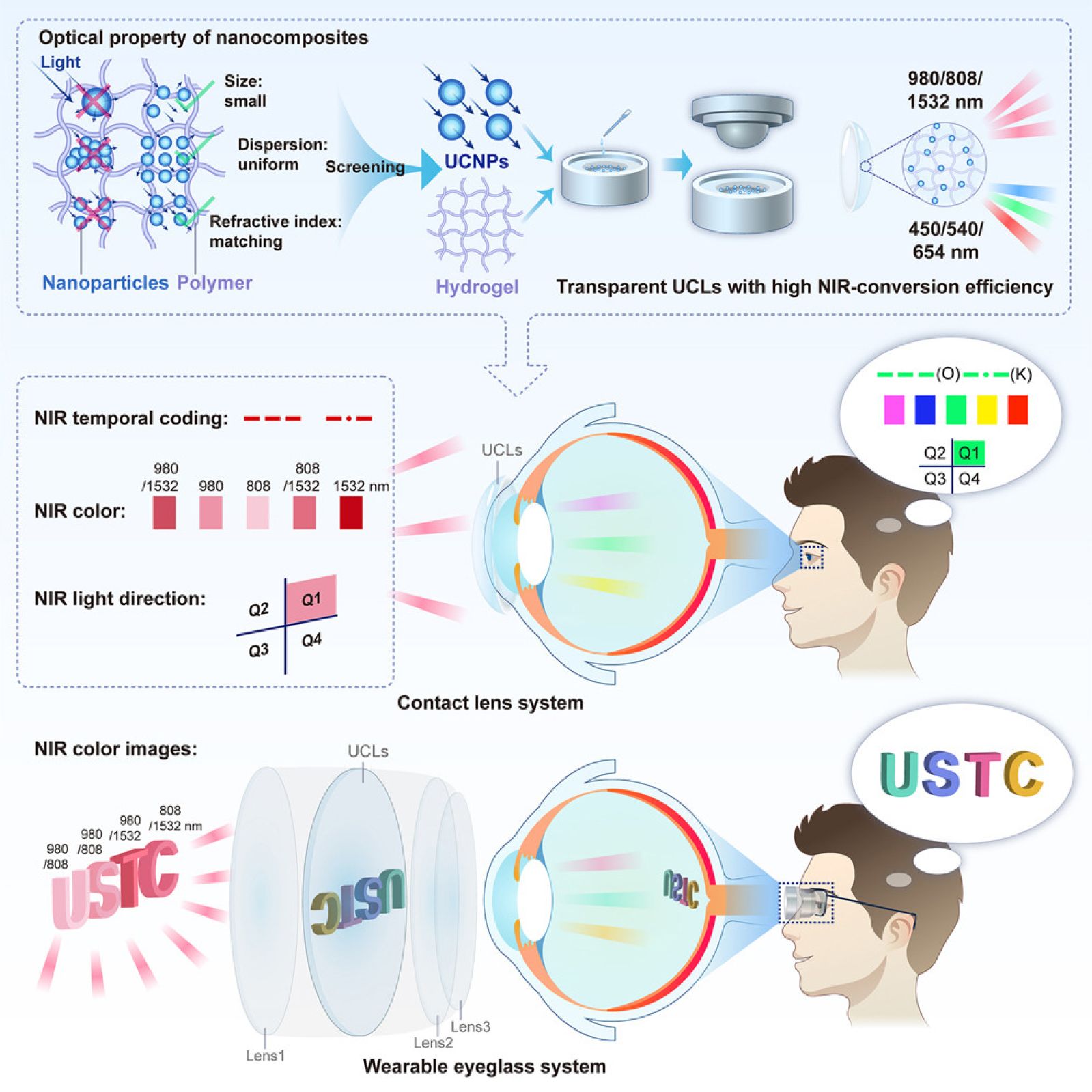Follow us on Google News (click on ☆)

This innovation relies on nanoparticles embedded in flexible polymers, similar to those used in conventional lenses. Unlike night vision goggles, these lenses require no external power source and allow simultaneous perception of visible and infrared light.
How does this technology work?
The lenses contain nanoparticles capable of absorbing infrared light (800-1600 nm) and transforming it into visible light (400-700 nm). This process, called "upconversion," relies on rare earth metal ions like ytterbium and erbium.
Researchers first tested the technology by injecting nanoparticles directly into the retinas of mice. The rodents showed behavioral and physiological reactions to infrared light, such as pupil contraction and activation of their visual cortex. These observations confirmed that the animals could perceive this normally invisible light.
To avoid such an invasive method in humans, the team developed contact lenses incorporating the same nanoparticles. Tests revealed wearers could detect flashing infrared signals and even distinguish different wavelengths, converted into visible colors.

A surprising feature: infrared perception improves with closed eyes. Unlike visible light, which is blocked by eyelids, infrared passes through them more easily, reducing interference. This discovery opens possibilities for applications in low-light conditions or medical imaging.
Potential applications and limitations
Researchers envision multiple uses, such as helping surgeons locate tumors or improving color vision for the colorblind. The lenses could also serve security purposes, like decoding infrared markers invisible to the naked eye.
However, spatial resolution remains limited due to light scattering by nanoparticles. To address this, the team is working on an improved version with additional layers. Currently, the lenses only detect projected infrared light, but scientists aim to expand their sensitivity.